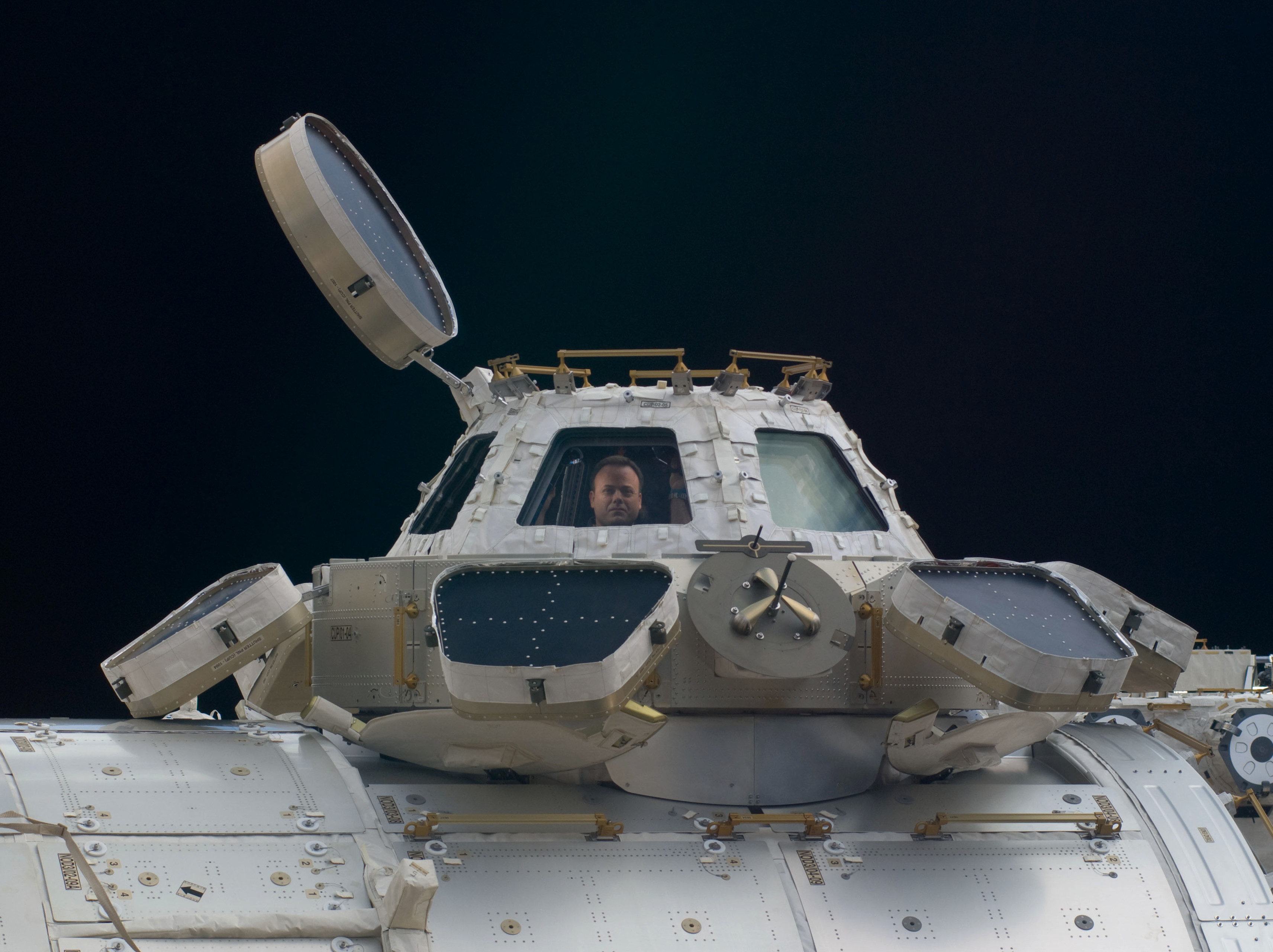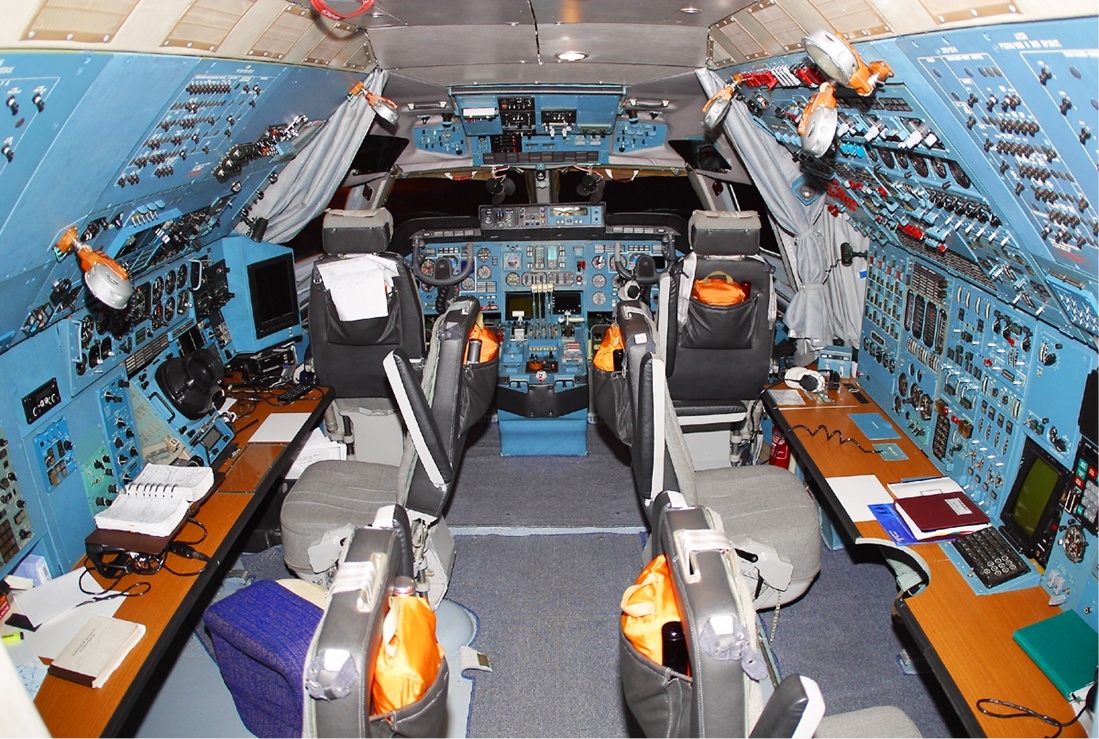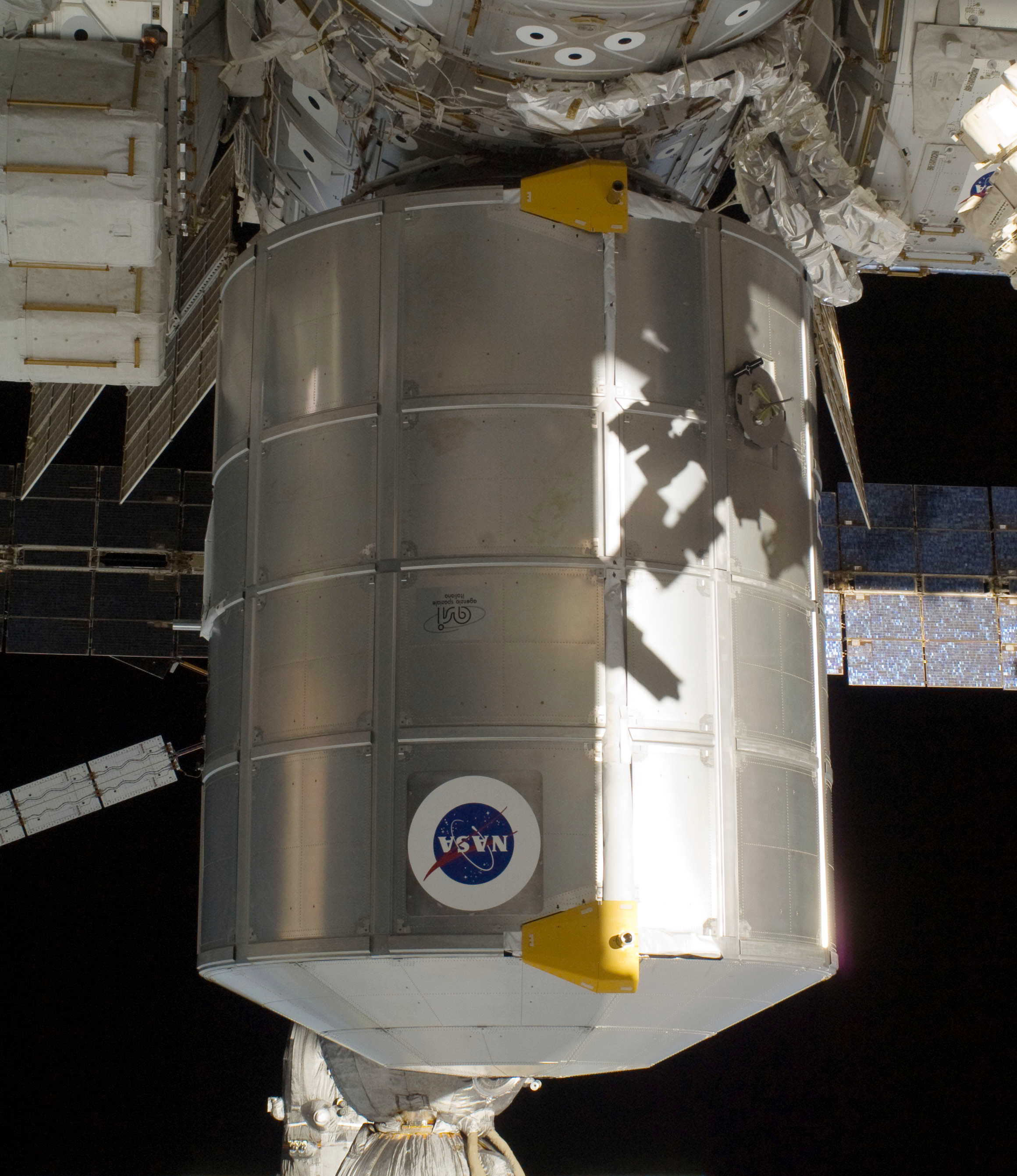|
Rassvet (ISS Module)
''Rassvet'' (russian: –Ý–∞—Å—Å–≤–µ—Ç; lit. "first light"), also known as the Mini-Research Module 1 (MRM-1; russian: –ú–∞–ª—ã–π –∏—Å—Å–ª–µ–¥–æ–≤–∞—Ç–µ–ª—å—Å–∫–∏–π –º–æ–¥—É–ª—å, ) and formerly known as the Docking Cargo Module (DCM), is a component of the International Space Station (ISS). The module's design is similar to the Mir Docking Module launched on STS-74 in 1995. ''Rassvet'' is primarily used for cargo storage and as a docking port for visiting spacecraft. It was flown to the ISS aboard on the STS-132 mission on 14 May 2010, and was connected to the ISS on 18 May 2010. The hatch connecting ''Rassvet'' with the ISS was first opened on 20 May 2010. On 28 June 2010, the Soyuz TMA-19 spacecraft performed the first docking with the module. Details ''Rassvet'' was docked to the nadir port of '' Zarya'' with help from the Canadarm2. ''Rassvet'' carried externally attached outfitting equipment from NASA for the ''Nauka'' Multipurpose Laboratory Module Upgrade (MLM-U ... [...More Info...] [...Related Items...] OR: [Wikipedia] [Google] [Baidu] |
Cupola (ISS Module)
The ''Cupola'' is an ESA-built observatory module of the International Space Station (ISS). Its name derives from the Italian word ', which means " dome". Its seven windows are used to conduct experiments, dockings and observations of Earth. It was launched aboard Space Shuttle ''Endeavour'''s mission STS-130 on 8 February 2010, and attached to the ''Tranquility'' (Node 3) module. With the ''Cupola'' attached, ISS assembly reached 85 percent completion. The ''Cupola'' central window has a diameter of . Overview The ''Cupola'' provides an observation and work area for the ISS crew giving visibility to support the control of the space station remote manipulator system and general external viewing of Earth, celestial objects and visiting vehicles. The Cupola project was started by NASA and Boeing, but canceled due to budget cuts. A barter agreement between NASA and the ESA resulted in the ''Cupola''s development being resumed in 1998 by ESA. The ''Cupola'' is important ... [...More Info...] [...Related Items...] OR: [Wikipedia] [Google] [Baidu] |
Russian Research Module
The Russian Research Module (RM) was to be a Russian component of the International Space Station (ISS) that provided facilities for Russian science experiments and research. History The original designs of ISS featured two research modules shaped like a rounded ''Zarya'' Functional Cargo Block, but Russian budget problems caused one of them along with the Universal Docking Module to be cancelled early in the program, leaving only one Research Module. This Research Module was scheduled to be built and launched in 2010 or later. In 2007 it was decided that, due to the continuing budget problems, the last Research Module was to be cancelled as well. According to the schedule the module with scientific designation for the Russian Orbital Segment became the FGB-2 based Multipurpose Laboratory Module ''Nauka'' approved after the cancellation of the original RM1 and RM2. Additionally the Russian Orbital Segment contains two smaller modules, initially named Mini-Research Module (MRM ... [...More Info...] [...Related Items...] OR: [Wikipedia] [Google] [Baidu] |
Astrotech Corporation
Astrotech Corporation, formerly Spacehab Inc., is a technology incubator headquartered in Austin, Texas. Astrotech uses technology sourced internally and from research institutions, government laboratories, and universities to fund, manage and sell start-up companies. Astrotech Corporation's subsidiaries provide commercial products and services to NASA, the U.S. Department of Defense, national space agencies, and global commercial customers. History Astrotech Corporation Astrotech Corporation was established in 1984. Prior to 2009, it was known as SPACEHAB, Inc., a company that provided space habitat microgravity experimentation equipment and services to NASA during the Space Shuttle era. As the Shuttle program came to an end, the company put more focus on its spacecraft processing business, Astrotech Space Operations, Inc. (ASO), its mass spectrometer instrumentation business, 1st Detect, Inc. and its microgravity vaccine development company, Astrogenetix, Inc. In August ... [...More Info...] [...Related Items...] OR: [Wikipedia] [Google] [Baidu] |
Florida
Florida is a state located in the Southeastern region of the United States. Florida is bordered to the west by the Gulf of Mexico, to the northwest by Alabama, to the north by Georgia, to the east by the Bahamas and Atlantic Ocean, and to the south by the Straits of Florida and Cuba; it is the only state that borders both the Gulf of Mexico and the Atlantic Ocean. Spanning , Florida ranks 22nd in area among the 50 states, and with a population of over 21 million, it is the third-most populous. The state capital is Tallahassee, and the most populous city is Jacksonville. The Miami metropolitan area, with a population of almost 6.2 million, is the most populous urban area in Florida and the ninth-most populous in the United States; other urban conurbations with over one million people are Tampa Bay, Orlando, and Jacksonville. Various Native American groups have inhabited Florida for at least 14,000 years. In 1513, Spanish explorer Juan Ponce de León became the first k ... [...More Info...] [...Related Items...] OR: [Wikipedia] [Google] [Baidu] |
Kennedy Space Center
The John F. Kennedy Space Center (KSC, originally known as the NASA Launch Operations Center), located on Merritt Island, Florida, is one of the National Aeronautics and Space Administration's (NASA) ten field centers. Since December 1968, KSC has been NASA's primary launch center of human spaceflight. Launch operations for the Apollo, Skylab and Space Shuttle programs were carried out from Kennedy Space Center Launch Complex 39 and managed by KSC. Located on the east coast of Florida, KSC is adjacent to Cape Canaveral Space Force Station (CCSFS). The management of the two entities work very closely together, share resources and operate facilities on each other's property. Though the first Apollo flights and all Project Mercury and Project Gemini flights took off from the then-Cape Canaveral Air Force Station, the launches were managed by KSC and its previous organization, the Launch Operations Directorate. Starting with the fourth Gemini mission, the NASA launch contro ... [...More Info...] [...Related Items...] OR: [Wikipedia] [Google] [Baidu] |
Antonov An-124 Ruslan
The Antonov An-124 Ruslan (; russian: –ê–Ω—Ç–æ–Ω–æ–≤ –ê–Ω-124 –Ý—É—Å–ª–∞–Ω, , Ruslan; NATO reporting name: Condor) is a large, strategic airlift, four-engined aircraft that was designed in the 1980s by the Antonov design bureau in the Ukrainian SSR, then part of the Soviet Union (USSR). The An-124 is the world's 2nd heaviest gross weight production cargo airplane and heaviest operating cargo aircraft, behind the destroyed one-off Antonov An-225 Mriya (a greatly enlarged design based on the An-124) and the Boeing 747-8. The An-124 remains the largest military transport aircraft in service. In 1971, design work commenced on the project, which was initially referred to as ''Izdeliye 400'' (''Product #400''), at the Antonov Design Bureau in response to a shortage in heavy airlift capability within the Military Transport Aviation Command (''Komandovaniye voyenno-transportnoy aviatsii'' or VTA) arm of the Soviet Air Forces. Two separate final assembly lines plants setup for the ar ... [...More Info...] [...Related Items...] OR: [Wikipedia] [Google] [Baidu] |
Science Power Platform
The Science Power Platform (SPP; russian: –ù–∞—É—á–Ω–æ-–≠–Ω–µ—Ä–≥–µ—Ç–∏—á–µ—Å–∫–∞—è –ü–ª–∞—Ç—Ñ–æ—Ä–º–∞, ''Sci-Energy Platform'', also known by Russian initialism NEP) was a planned Russian element of the International Space Station (ISS) that was intended to be delivered to the ISS by a Russian Proton rocket or Zenit rocket (it was originally designed to be part of Mir-2) but was shifted to launch by Space Shuttle as part as a tradeoff agreement on other parts of the ISS. History It would have provided additional power for the ISS as well as roll axis control capability for the orbital facility. If the Science Power Platform had been delivered to the ISS, it would have been attached to the zenith port of ''Zvezda'', a position currently occupied by ''Poisk''. The SPP would have had eight solar arrays and a robotic arm provided by the European Space Agency (ESA) dedicated to maintaining the SPP. The SPP's robotic arm ( European Robotic Arm) was still added and is currently a ... [...More Info...] [...Related Items...] OR: [Wikipedia] [Google] [Baidu] |
Energia (corporation)
PAO S. P. Korolev Rocket and Space Corporation Energia (russian: –Ý–∞–∫–µ—Ç–Ω–æ-–∫–æ—Å–º–∏—á–µ—Å–∫–∞—è –∫–æ—Ä–ø–æ—Ä–∞—Ü–∏—è ¬´–≠–Ω–µ—Ä–≥–∏—謪 –∏–º. –°. –ü. –ö–æ—Ä–æ–ª—ë–≤–∞, Raketno-kosmicheskaya korporatsiya "Energiya" im. S. P. Korolyova), also known as RSC Energia (, RKK "Energiya"), is a Russian manufacturer of spacecraft and space station components. The company is the prime developer and contractor of the Russian crewed spaceflight program; it also owns a majority of Sea Launch. Its name is derived from Sergei Korolev, the first chief of its design bureau, and the Russian word for energy. Overview Energia is the largest company of the Russian space industry and one of its key players. It is responsible for all operations involving human spaceflight and is the lead developer of the Soyuz and Progress spacecraft, and the lead developer of the Russian end of the International Space Station (ISS). In the mid-2000s, the company employed 22,000‚Äì30,000 people. The ent ... [...More Info...] [...Related Items...] OR: [Wikipedia] [Google] [Baidu] |
Russian Segment
Russian(s) refers to anything related to Russia, including: *Russians (, ''russkiye''), an ethnic group of the East Slavic peoples, primarily living in Russia and neighboring countries *Rossiyane (), Russian language term for all citizens and people of Russia, regardless of ethnicity *Russophone, Russian-speaking person (, ''russkogovoryashchy'', ''russkoyazychny'') *Russian language, the most widely spoken of the Slavic languages *Russian alphabet *Russian cuisine *Russian culture *Russian studies Russian may also refer to: *Russian dressing *''The Russians'', a book by Hedrick Smith *Russian (comics), fictional Marvel Comics supervillain from ''The Punisher'' series *Russian (solitaire), a card game * "Russians" (song), from the album ''The Dream of the Blue Turtles'' by Sting *"Russian", from the album ''Tubular Bells 2003'' by Mike Oldfield *"Russian", from the album '' '' by Caravan Palace *Nik Russian, the perpetrator of a con committed in 2002 *The South African name for a ... [...More Info...] [...Related Items...] OR: [Wikipedia] [Google] [Baidu] |
Permanent Multipurpose Module
The ''Leonardo'' Permanent Multipurpose Module (PMM) is a module of the International Space Station. It was flown into space aboard the Space Shuttle ''Discovery'' on STS-133 on 24 February 2011 and installed on 1 March. ''Leonardo'' is primarily used for storage of spares, supplies and waste on the ISS, which was until then stored in many different places within the space station. It is also the personal hygiene area for the astronauts who live in the US Orbital Segment. The ''Leonardo'' PMM was a Multi-Purpose Logistics Module (MPLM) before 2011, then was modified into its current configuration. It was formerly one of two MPLM used for bringing cargo to and from the ISS with the Space Shuttle. The module was named for Italian polymath Leonardo da Vinci. Like the other Multi-Purpose Logistics Modules, it was constructed by the Italian Space Agency, who chose to name it after Leonardo da Vinci. Construction began in April 1996, and the module was delivered to NASA at the Kennedy ... [...More Info...] [...Related Items...] OR: [Wikipedia] [Google] [Baidu] |






